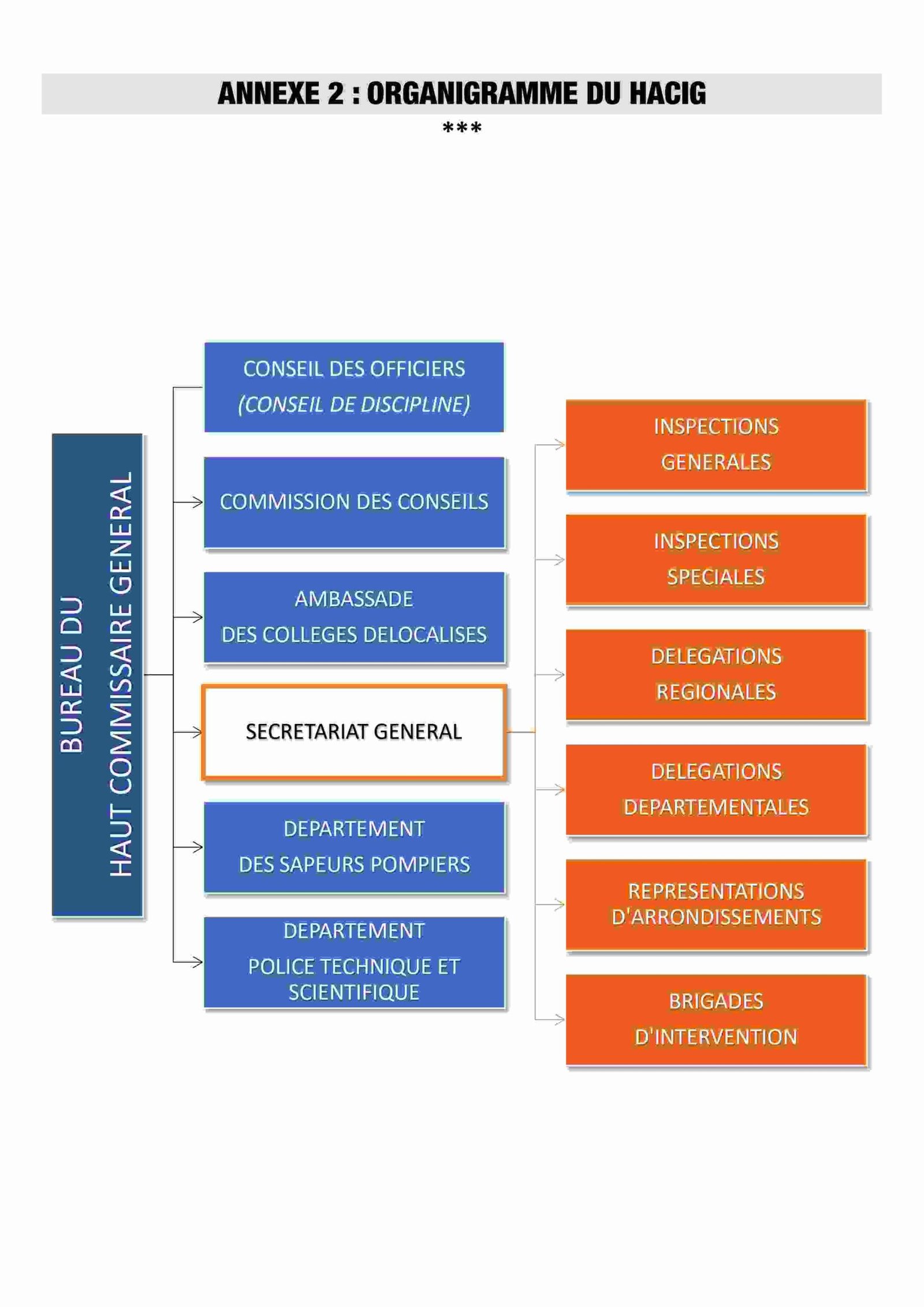Our Team
We are guided by a diverse, committed team of human rights professionals, legal experts, field advocates, and community organizers.
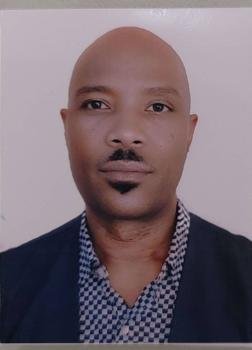
Head of the Executive Bureau.
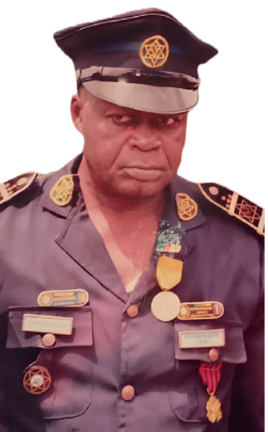
BUREAU EXECUTIVE MEMBER
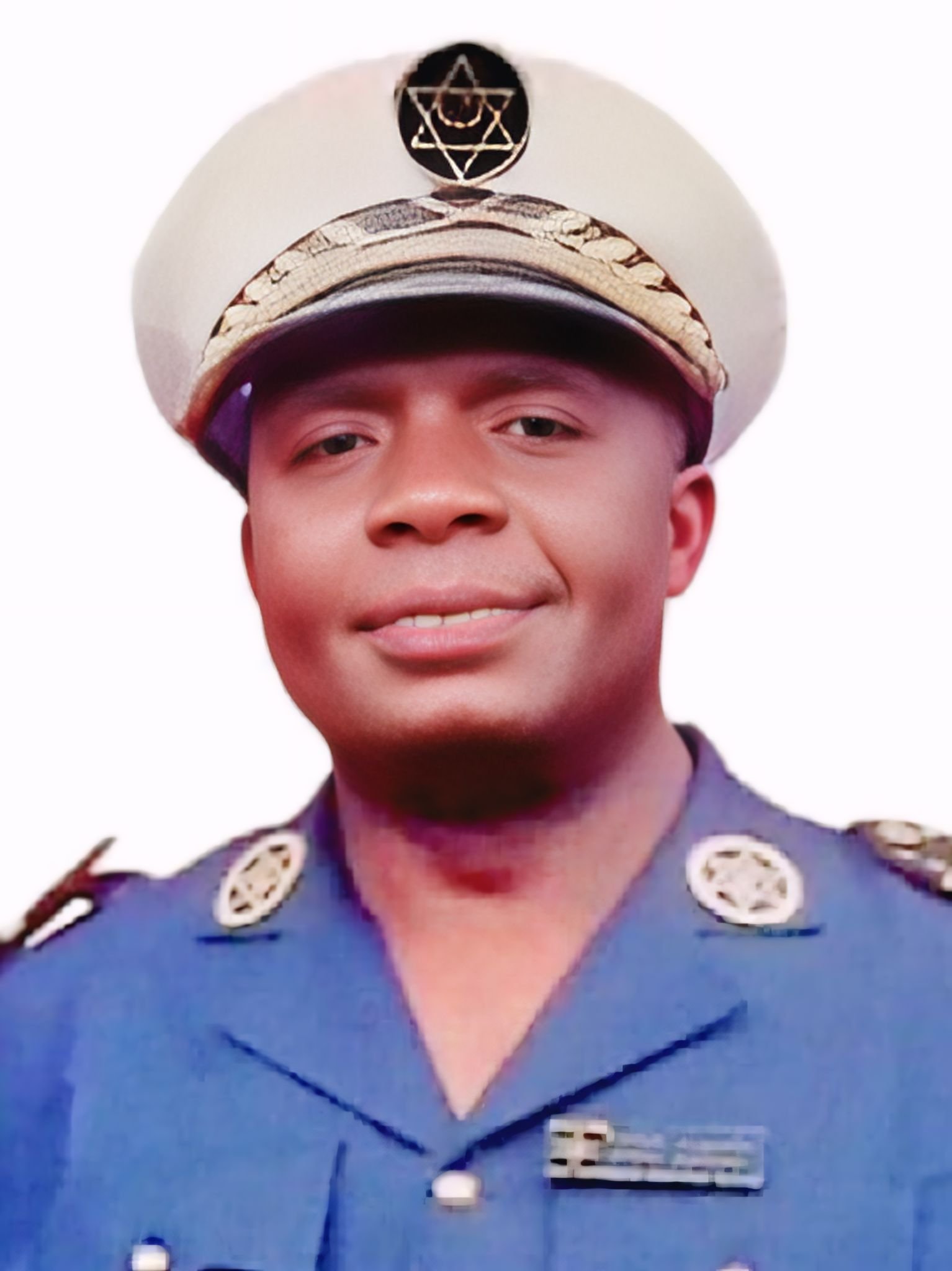
FOUNDING MEMBER
COMMISSIONER(HCGI/HACIG)
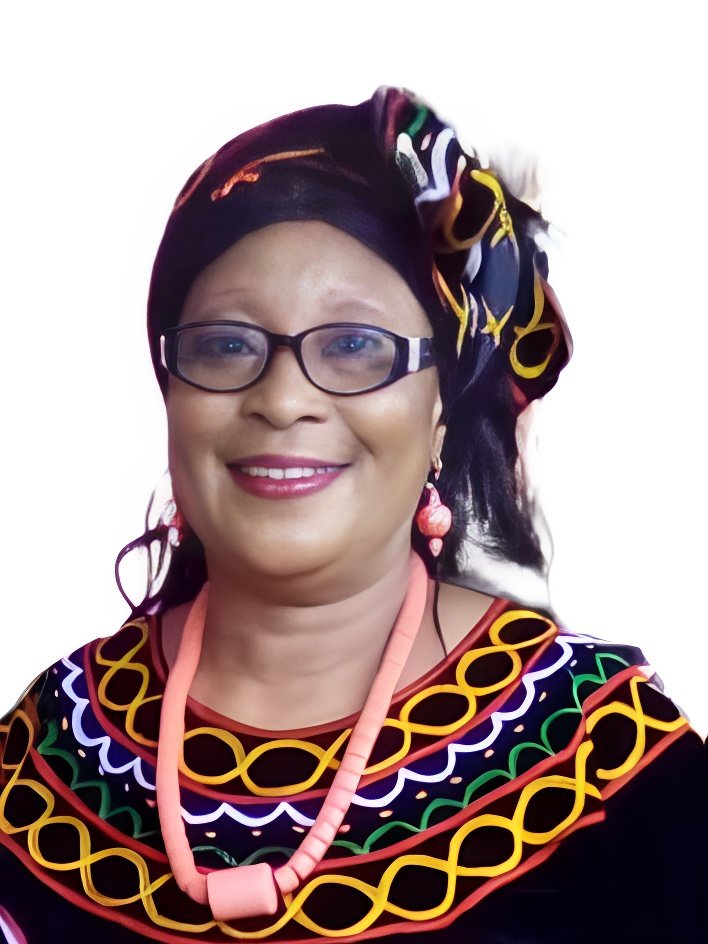
COMMISSIONER (HCGI/HACIG)
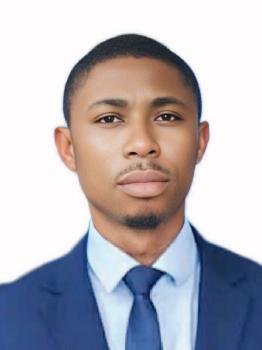
COMMISSAIRE (HCGI/HACIG)
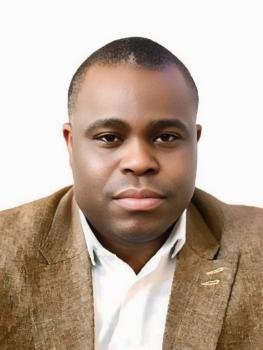
Commissioner (HCGI/HACIG)
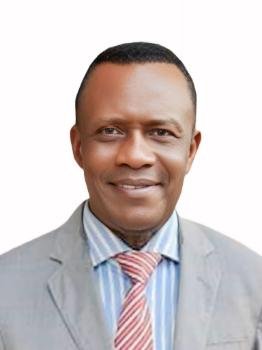
Commissioner (HCGI/HACIG)
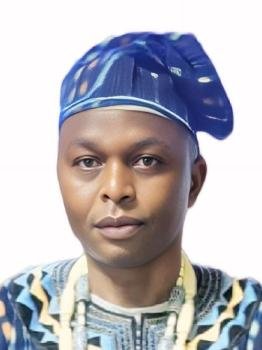
Commissioner (HCGI/HACIG)
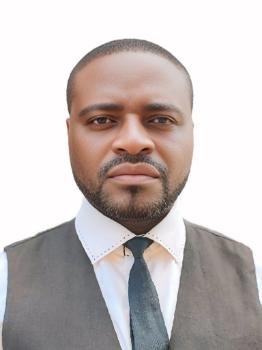
Commissioner (HCGI/HACIG)

Special Inspector (HCGI/HACIG)

Commissioner (HCGI/HACIG)
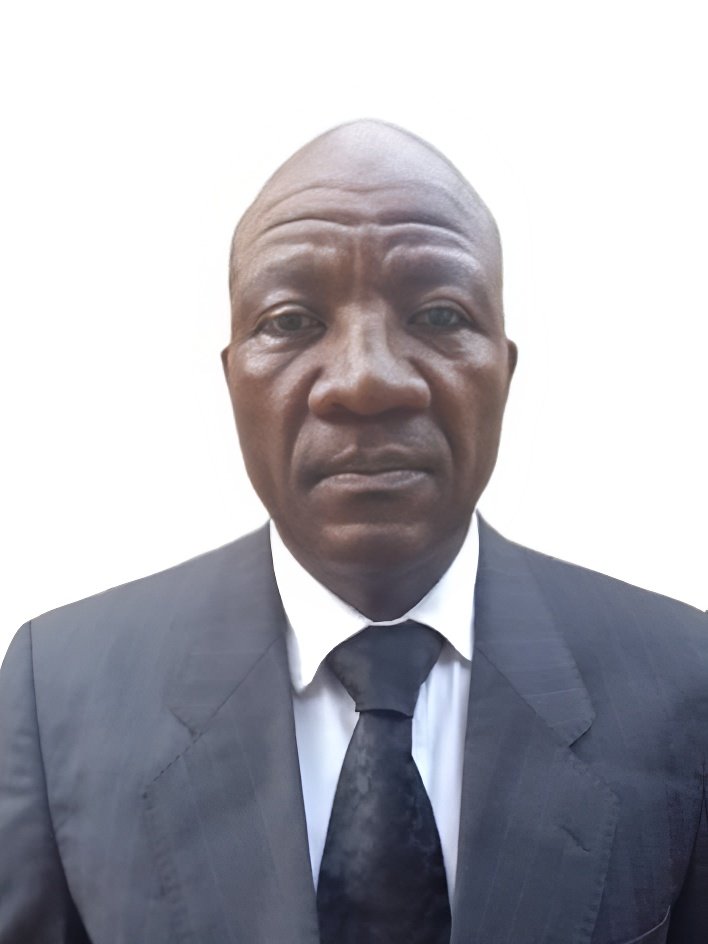
COMMISSIONER (HCG/HACIG)

COMMISSAIRE (HCGI/HACIG)
Governance
OUR GOVERNANCE STRUCTURES INCLUDES:
A) Executive Bureau headed by the General High Commissioner (GHC)
Provides strategic leadership and oversight.
THE STRUCTURES FOUND BELOW MANAGES DAILY OPERATIONS AND DRIVES THE MISDION FORWARD IN ALL SECTORS OF WORKS:
B) Specialized Organs / Councils;
HACIG comprises eighteen (18) specialized bodies known as Councils. These are Decentralized Technical Organs are headed by General Coordinator :
1. Evangelical Council
2. Islamic Council
3. Legal Council
4. Financial Council
5. Social Housing Council
6. Maritime and Technological Council
7. Health Council
8. High Council for Peace
9. High Council of Insurance Investigators
10. Cultural and Scientific Council
11. Environmental Council
12. Economic Council
13. Industrial Council
14. Mining and Energy Council
15. Communications Council
16. Agronomic Council
17. Educational Council
C) The Outsourced Colleges
The Outsourced Colleges (The representations of HCGI/HACIG Continental/a foreign Country level), Headed by HCGI/HACIG Ambassadors.
1. Diplomatic Representation
-Represent HCGI/HACIG in the host country or continent.
-Maintain ongoing communication with local governments, international institutions, NGOs, and diplomatic missions.
2. Partnership Development
-Seek, initiate, and manage partnerships with foreign organizations, agencies, or associations aligned with HCGI/HACIG’s mission.
-Facilitate bilateral or multilateral cooperation in human rights, humanitarian aid, development, and peace-building.
3. Advocacy & Human Rights Monitoring
-Monitor, document, and report on human rights violations or humanitarian crises in the region.
-Support local communities and individuals facing injustices through legal or humanitarian means.
4. Mission Coordination
-Organize and coordinate HCGI/HACIG missions and interventions abroad (civil, humanitarian, legal, or emergency).
-Oversee HCGI/HACIG delegations or councils active in the country or region.
5. Cultural & Educational Exchange
-Promote HCGI/HACIG’s values through forums, trainings, workshops, and public education in the host country.
-Support cultural dialogue and international understanding.
6. Recruitment & Representation
-Identify, appoint, or propose qualified individuals for HCGI/HACIG roles (e.g., attachés, human rights observers, collaborators).
-Supervise members’ conformity to ethics, uniforms, and codes of conduct abroad.
7. Media, Visibility & Reporting
-Animate digital platforms (website, social media) relevant to the country or continent.
-Publish regular updates, activity reports, and media releases highlighting fieldwork.
8. Liaison Role
-Serve as the main liaison between the foreign nation and the HCGI/HACIG Headquarters.
-Ensure timely submission of reports, recommendations, and needs assessments.
9. Support for Diaspora Communities
-Address rights issues affecting the Cameroonian or African diaspora.
-Offer legal orientation, human rights education, or intervention as needed.
10. Compliance and Ethics Oversight
-Ensure all actions and representatives in the region conform to HCGI/HACIG’s legal, ethical, and operational standards.
D) The Regional Collages
The Regional Collages (The 10 Regional Delegations of Cameroon), Headed by Regional Delegates.
Presentation of the Republic of Cameroon’s full territorial administrative breakdown: HCGI/HACIG's administrative breakdown in Cameroon.
🇨🇲 Republic of Cameroon – HCGI/HACIG's Administrative Breakdown from Region to Region;
Regions are headed or managed by Region Delegates,Divisions (Departments) are managed by Sub-Divisional Delegates, Districts by Districts Heads while Quarters are managed by their Representatives.
1. Adamawa Region – Capital: Ngaoundéré
Divisions (Departments):
- Vina
- Djérem
- Faro‑et‑Déo
- Mayo‑Banyo
- Mbéré
2. Centre Region – Capital: Yaoundé
Divisions (Departments):
- Haute–Sanaga
- Lekié
- Mbam‑et‑Inoubou
- Mbam‑et‑Kim
- Méfou‑et‑Afamba
- Méfou‑et‑Akono
- Mfoundi
- Nyong‑et‑Kéllé
- Nyong‑et‑Mfoumou
- Nyong‑et‑So’o
3. East Region – Capital: Bertoua
Divisions (Departments):
- Haut‑Nyong
- Lom‑et‑Djerem
- Kadey
- Boumba‑et‑Ngoko
4. Far North Region – Capital: Maroua
Divisions (Departments):
- Diamaré
- Logone‑et‑Chari
- Mayo‑Danay
- Mayo‑Kani
- Mayo‑Sava
- Mayo‑Tsanaga
5. Littoral Region – Capital: Douala
Divisions (Departments):
- Moungo
- Nkam
- Sanaga‑Maritime
- Wouri
6. North Region – Capital: Garoua
Divisions (Departments):
- Bénoué
- Faro
- Mayo‑Louti
- Mayo‑Rey
7. Northwest Region – Capital: Bamenda
Divisions (Departments):
- Boyo
- Bui
- Donga‑Mantung
- Menchum
- Mezam
- Momo
- Ngoketunjia
8. West Region – Capital: Bafoussam
Divisions (Departments):
- Bamboutos
- Haut‑Nkam
- Hauts‑Plateaux
- Koung‑Khi
- Menoua
- Mifi
- Ndé
- Noun
9. South Region – Capital: Ebolowa
Divisions (Departments):
- Dja‑et‑Lobo
- Mvila
- Océan
- Vallée‑du‑Ntem
10. Southwest Region – Capital: Buea
Divisions (Departments):
- Fako
- Koupé‑Manengouba
- Lebialem
- Manyu
- Meme
- Ndian
Administrative Structure
- 10 Regions exist in Cameroon
- 58 Divisions/Departments exist in Cameroon
- 360 Sub-Divisions exist in Cameroon
Uniforms:
THE UNIFORMS of the High Commission for General Intervention (HCGI-HACIG):
In accordance with approval No. 00587/L/MINATD/DAP/CES of March 1, 2006 and No. 002770/L/MINATD/DAP/CES of 23 November 2005.
TITLE XV - GRADES: INSIGNES PROMOTIONNELS;
Article 28:- Definition of symbols and grades
● The Bars: Represent righteousness, fairness, and justice.
● The Stars: Denote discipline and honor in serving the homeland.
● The Exagram : Signifies excellence in universal principles and victory in human rights and fundamental freedoms.
● The Seven Stars: Symbolize victory in human rights. Doubling this to fourteen stars represents temperance in human rights matters. The sum of the digits in fourteen (1 + 4) equals five, signifying royalty and domination, correlating with the five branches of the pentagon. The number seven also alludes to the creation of the world in seven days and the concept of seven heavens, embodying the "Victory of Providence."
● The Three Stars: Represent loyalty and authority in human rights and freedoms. The number three is emblematic of the three kings, the three shepherds, and the Holy Trinity, marking success in global human rights endeavors.
● Une Étoile (One Star): Denotes expertise and understanding of human rights. Doubling this value signifies duality, representing the union of actions towards global human rights respect. This mirrors the yin and yang, symbolizing the energy that governs all.
● The "V": Stands for the first and second initiation into human rights, focusing on channeling intrinsic potential towards awareness and intervention in human rights matters.
● The Circle: Signifies the matrix for the fertilization of new ideas in human rights and fundamental freedoms.
CHAPTER III: UNIFORMS (OUTFITS):
The (HCGI/HACIG) due to its great representativeness on the national and international level, wears ceremonial uniform for major events, receptions, international trips and national. And camouflage outfits for relief operations in the event of disasters or calamities in order to save human lives in danger.
TITLE XVI: PRESENTATION OF UNIFORMS (OUTFITS)
The (HCGI/HACIG) due to its great representativeness on the national and international level, wears ceremonial uniform for major events, receptions, international trips and national. And camouflage outfits for relief operations in the event of disasters or calamities in order to save human lives in danger.
Article 29: STATE DRESS (Complet Suite)
● High Commissioner Model Uniform: Features 8 buttons, 2 back slits, 1 secret pocket, and epaulettes representing intrinsic values (badges) of human rights as defined by the symbols and badge.
Crafted from herringbone tergal fabric in blue and white colors, symbolizing peace, welcome, respect, and honor in matters of fundamental rights as the supreme existential value.
The collar is stamped with the HACIG insignia and logo.
Article 30: KEPI: Strike of the logo and badge of the (HCGI / HACIG) composed of white at the top and blue at the base dotted with branches around the edge and struck with the ranks for senior executives.
Article 31: Ensemble Camoufle:
● High Commissioner Model Uniform: Features 8 buttons, 2 back slits, 1 secret pocket, and epaulettes representing intrinsic values (badges) of human rights as defined by the symbols and badge.
Crafted from herringbone tergal fabric in blue and white colors, symbolizing peace, welcome, respect, and honor in matters of fundamental rights as the supreme existential value.
The collar is stamped with the HACIG insignia and logo.
● Lined, long-sleeved, double-armed, foam top. 5 pockets including a secret, stamped plaque and special HACIG insignia on the pocket and left arm (American drill fabric, flowing)
● TROUSERS: Waist lined up to the knees, 6 pockets including 2 camouflaged logo and badge on the belt bitter Logo plate and special HACIG badge allowing for interventions in case of Disasters or calamities the outfit is green, which signifies the appeasement and relief of people in distress and the relief of people in distress and discipline in matters of human rights.
● Black outfit for possible rescue operations
● Beret: black in color with the logo and badge of the (HCGI/HACIG) on the right
● Cap: Green with the HCGI/HACIG logo and insignia on the front
TITLE XVII: LOGO:
Article 32: The logos are detailed as follows:
a) THE BRANCHES: Represents world peace and security in terms of rights and freedoms
b) THE LION: represents respect, royalty and the defense of rights and freedoms
c) THE BALANCE: represents justice, fairness, transparency and balance in matters of rights and freedoms.
d) THE EXAGRAM: Represents celerity in universal principles and victory in matters of human rights and fundamental freedoms.
MAIN Organs:
Offers specialized insight on human rights law, policy, and advocacy etc..
ORGANS OF HCGI / HACIG
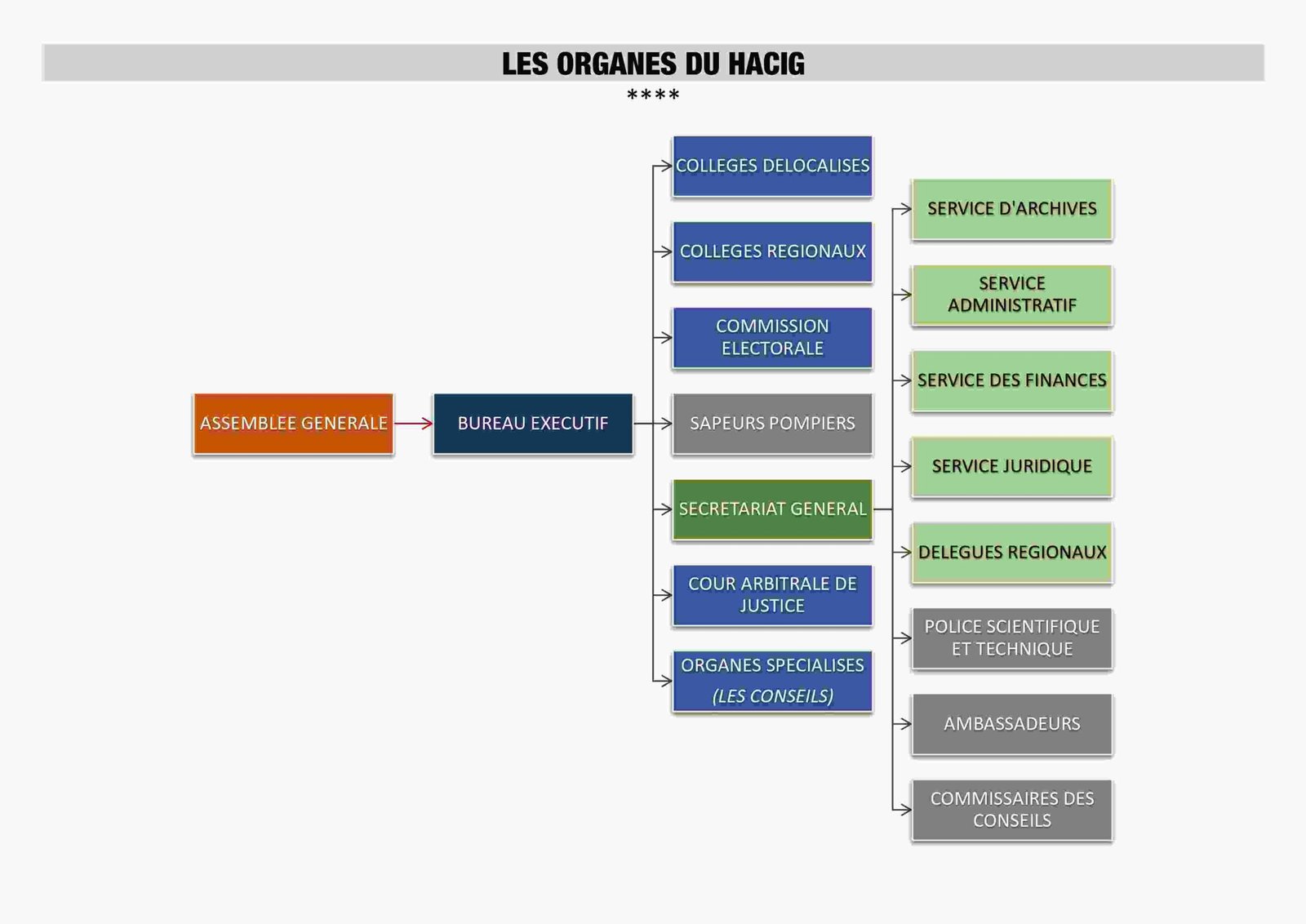
ORGANIGRAMME OF HCGI / HACIG
